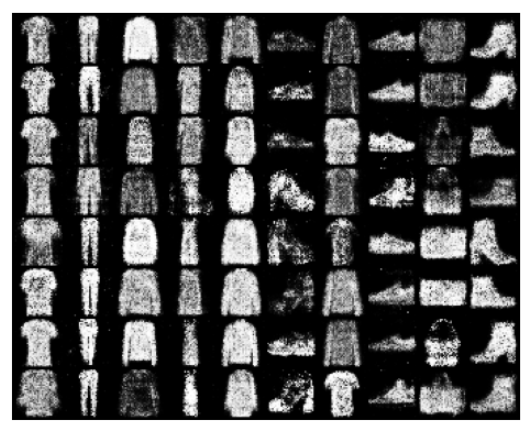https://github.com/deepmancer/diffusion-gan-vae-pytorch
A PyTorch implementation of various deep generative models, including Diffusion (DDPM), GAN, cGAN, and VAE.
https://github.com/deepmancer/diffusion-gan-vae-pytorch
conditional-diffusion conditional-gan conditional-generation diffusion-models fashion-mnist from-scratch generative-adversarial-network mnist pytorch vae-pytorch
Last synced: 4 months ago
JSON representation
A PyTorch implementation of various deep generative models, including Diffusion (DDPM), GAN, cGAN, and VAE.
- Host: GitHub
- URL: https://github.com/deepmancer/diffusion-gan-vae-pytorch
- Owner: deepmancer
- Created: 2023-05-24T12:29:34.000Z (over 2 years ago)
- Default Branch: main
- Last Pushed: 2024-08-16T12:18:00.000Z (over 1 year ago)
- Last Synced: 2024-10-11T20:02:56.981Z (about 1 year ago)
- Topics: conditional-diffusion, conditional-gan, conditional-generation, diffusion-models, fashion-mnist, from-scratch, generative-adversarial-network, mnist, pytorch, vae-pytorch
- Language: Jupyter Notebook
- Homepage:
- Size: 20.6 MB
- Stars: 4
- Watchers: 1
- Forks: 0
- Open Issues: 0
-
Metadata Files:
- Readme: README.md
Awesome Lists containing this project
README
# 🎨 Deep Generative Models in PyTorch




> Master deep generative models in PyTorch with ease!
Welcome to **Diffusion-GAN-VAE-PyTorch**! This repository is your ultimate resource for mastering deep generative models, implemented from scratch in PyTorch. It features **Variational Autoencoders (VAE)**, **Generative Adversarial Networks (GAN)**, **Conditional GANs**, **Diffusion Models**, and **Conditional Diffusion Models**, all crafted with clarity and precision.
---
| **Source Code** | **Website** |
|:-----------------|:------------|
| github.com/deepmancer/diffusion-gan-vae-pytorch | deepmancer.github.io/diffusion-gan-vae-pytorch |
---
## 🌟 Highlights
- 🧩 Modular & Educational
- 🔍 Explore Cutting-Edge Models
- 💡 Beginner-Friendly Yet Research-Ready
- 📕 Fully documented
👉 **[Star this repo](https://github.com/deepmancer/diffusion-gan-vae-pytorch/stargazers)** if you find it helpful, and join our community of AI enthusiasts!
---
## 🌠 Results
### Fashion MNIST

### Conditional Diffusion Model


### Diffusion Model


### Conditional GAN

### GAN


### VAE


---
## 🛠️ Installation
### Requirements
Ensure the following dependencies are installed:
- **Python 3**: The programming language used.
- **PyTorch**: The deep learning framework for model building and training.
- **NumPy**: For numerical computations.
- **Matplotlib**: For result visualizations.
- **tqdm**: For progress tracking.
Install dependencies with pip:
```bash
pip install torch numpy matplotlib tqdm
```
---
## 🌀 Models Overview
### 🔹 Variational Autoencoder (VAE)
A **VAE** learns a probabilistic latent space, enabling smooth interpolation and robust generation of new data points.
### 🔹 Generative Adversarial Network (GAN)
**GANs** pit a generator against a discriminator in a game-like setup, creating highly realistic samples over time.
### 🔹 Conditional Generative Adversarial Network (cGAN)
**cGANs** incorporate conditional inputs (like class labels) to control data generation, enabling targeted synthesis.
### 🔹 Diffusion Models
**Diffusion Models** simulate a stochastic process to progressively model complex distributions, resulting in high-quality generation.
### 🔹 Conditional Diffusion Models
Building on diffusion models, **Conditional Diffusion Models** allow for guided, condition-driven generation.
---
## 🌟 Getting Started
1. Clone the repository:
```bash
git clone https://github.com/deepmancer/diffusion-gan-vae-pytorch.git
cd diffusion-gan-vae-pytorch
```
2. Install dependencies.
3. Run the notebook!
---
## 📝 License
This project is licensed under the **MIT License**. Feel free to use it in your projects while crediting the repository. See the [LICENSE](LICENSE) file for details.